

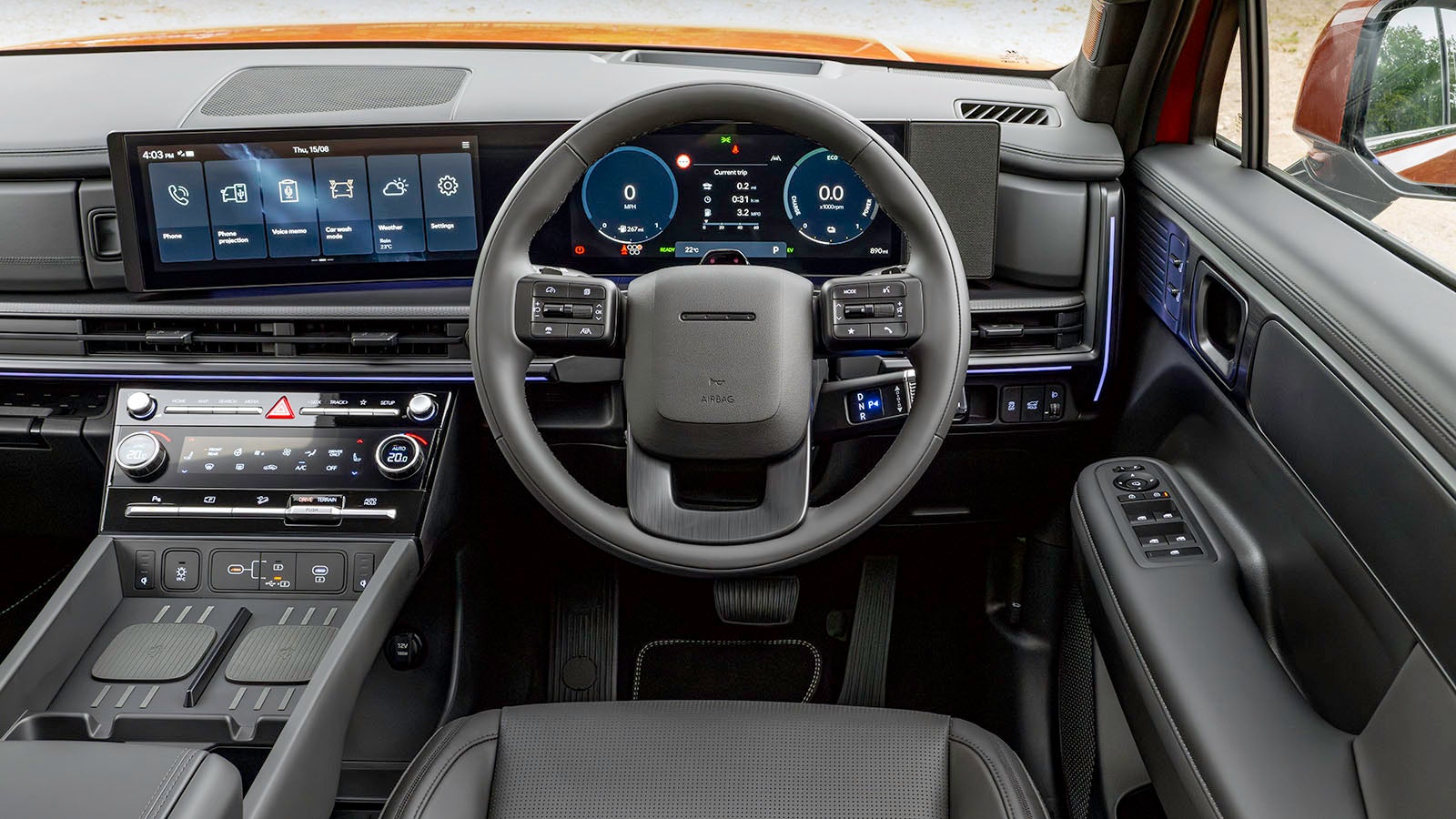
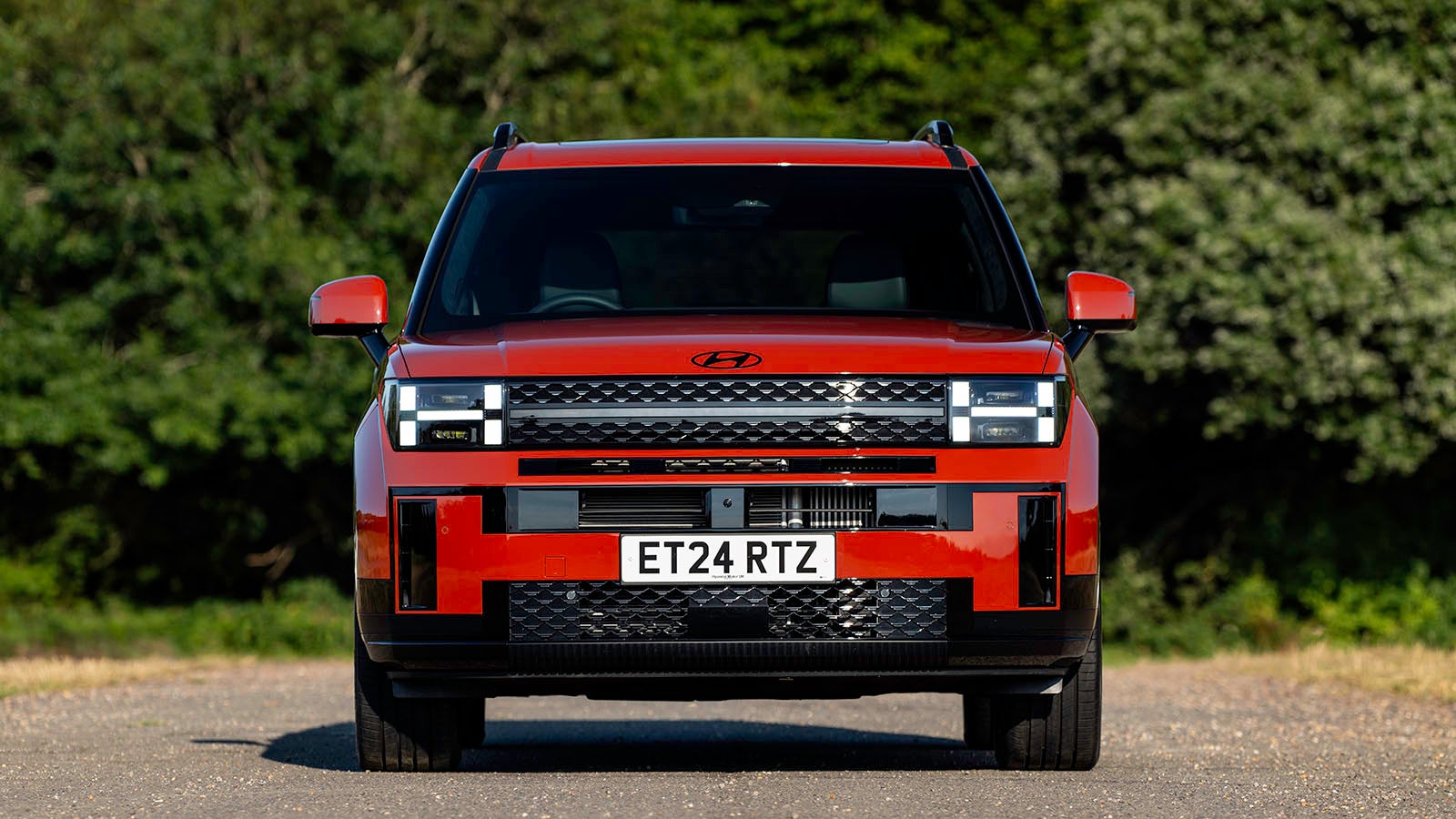

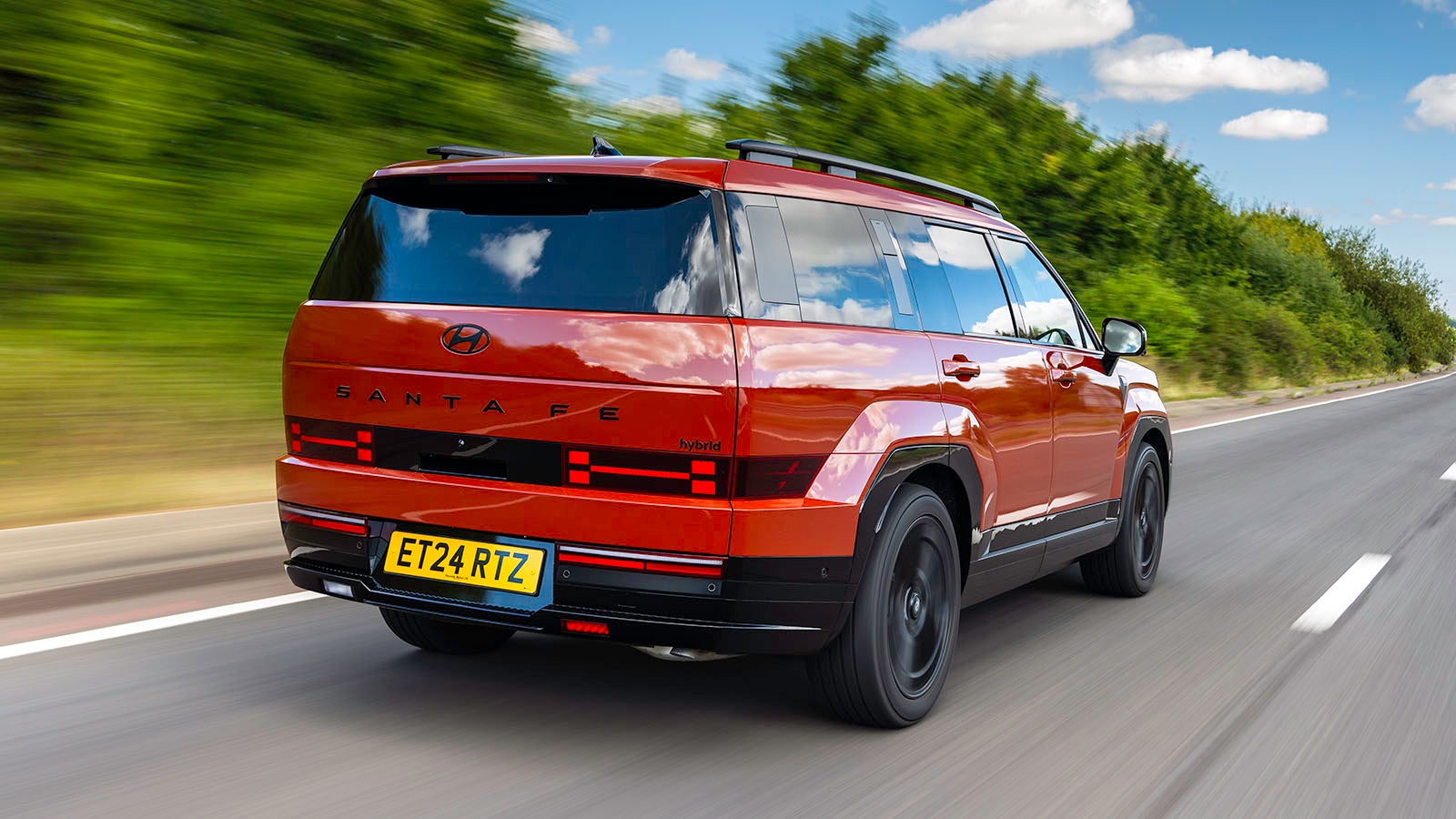
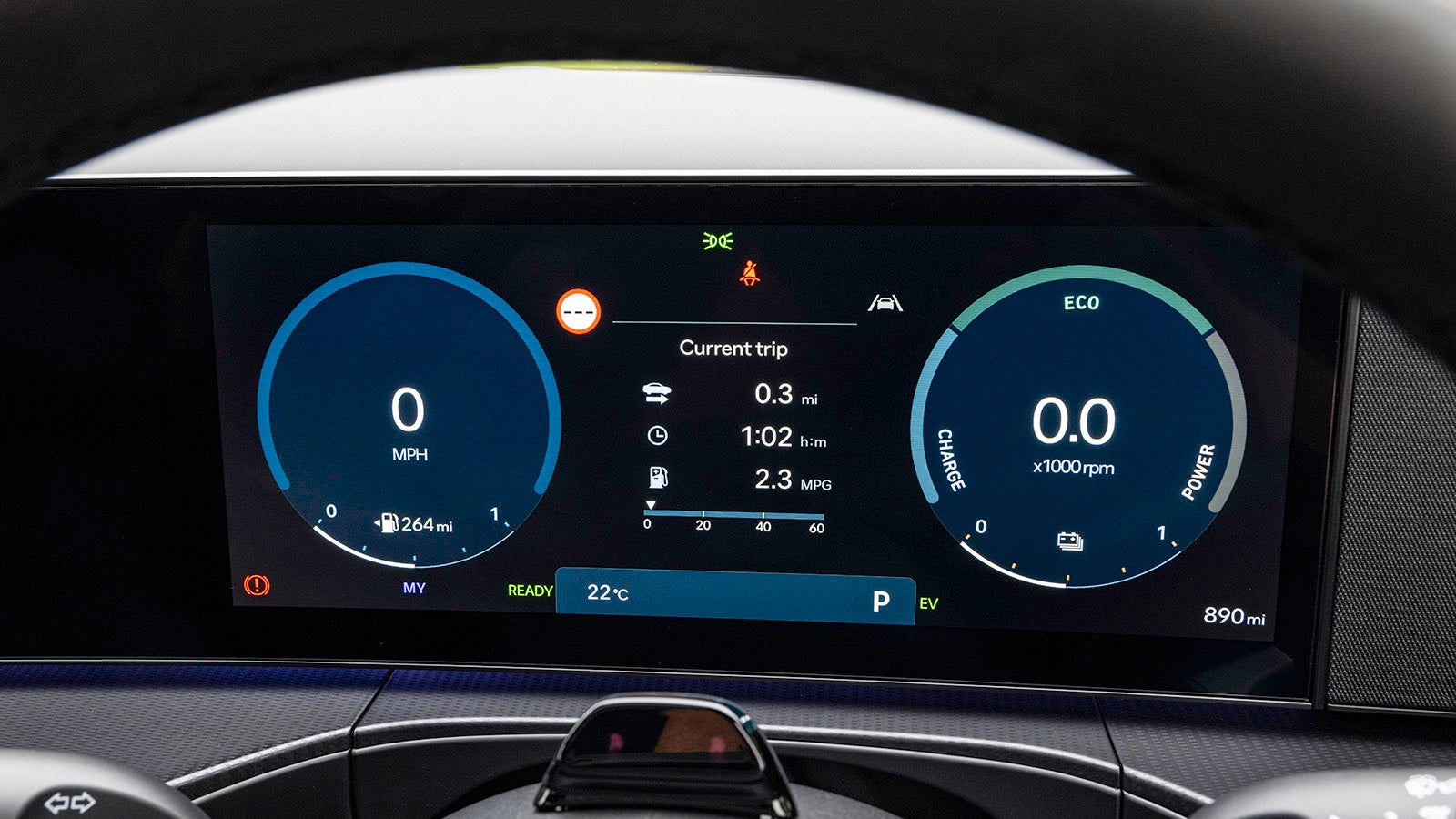
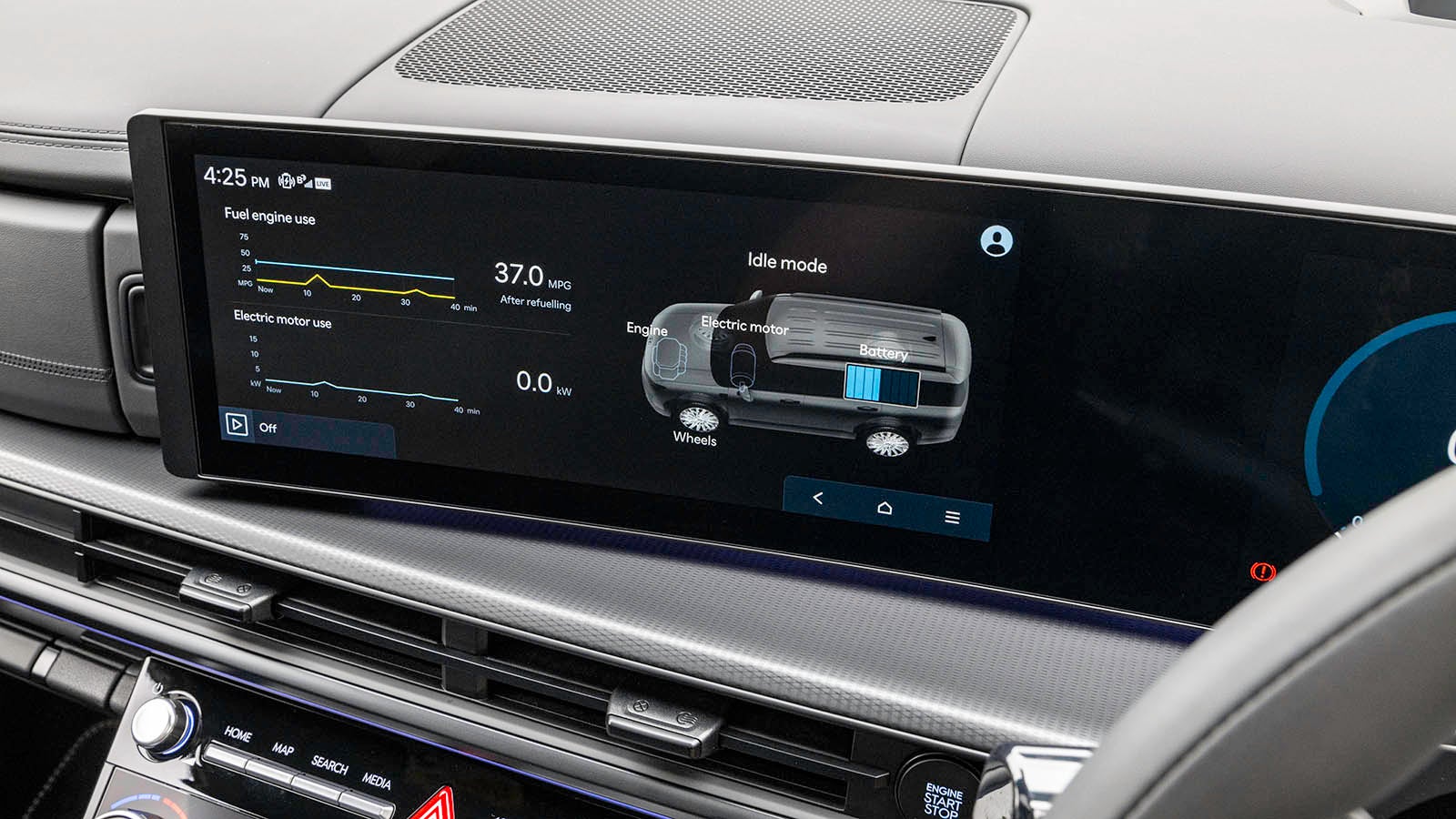



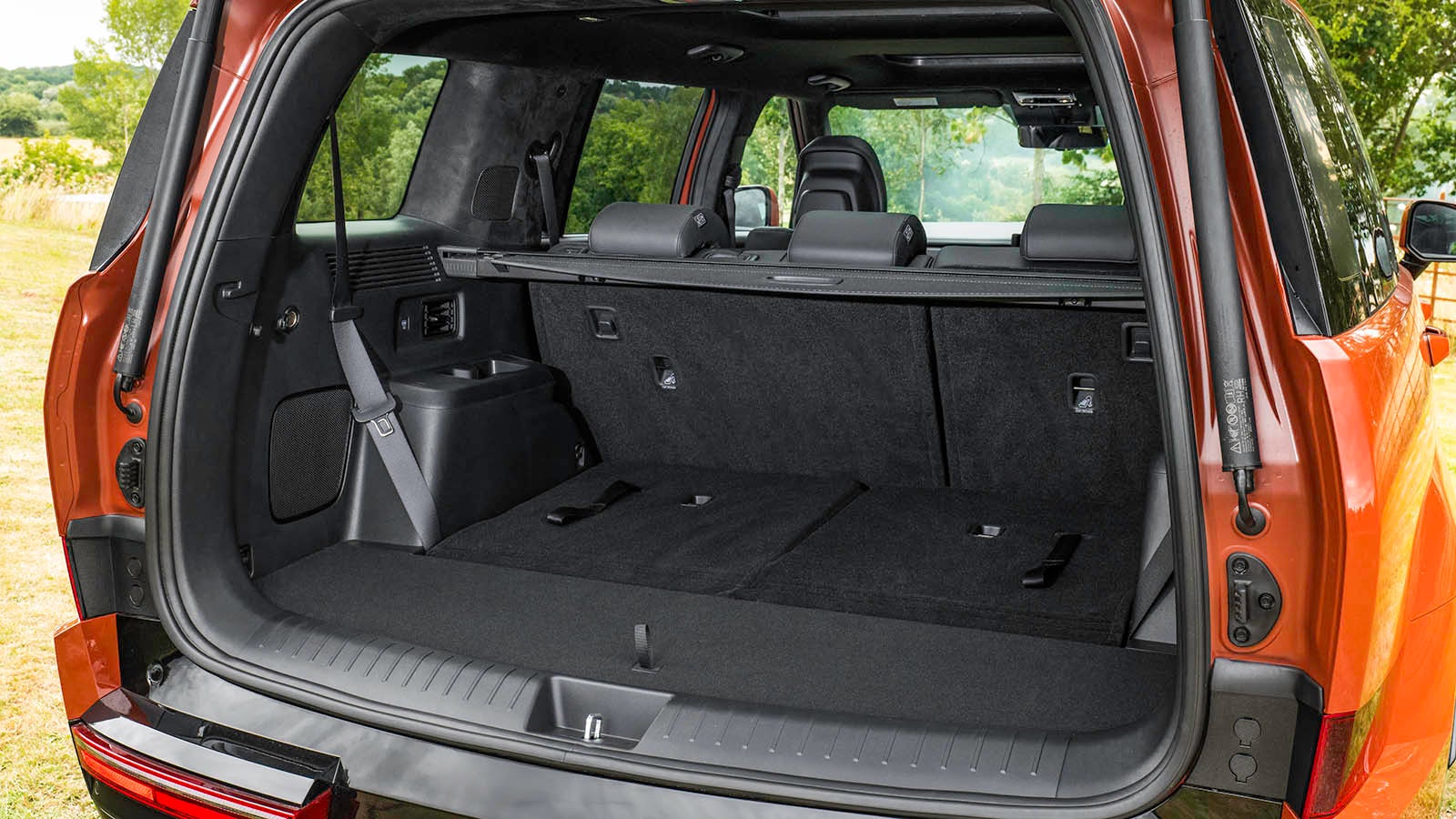
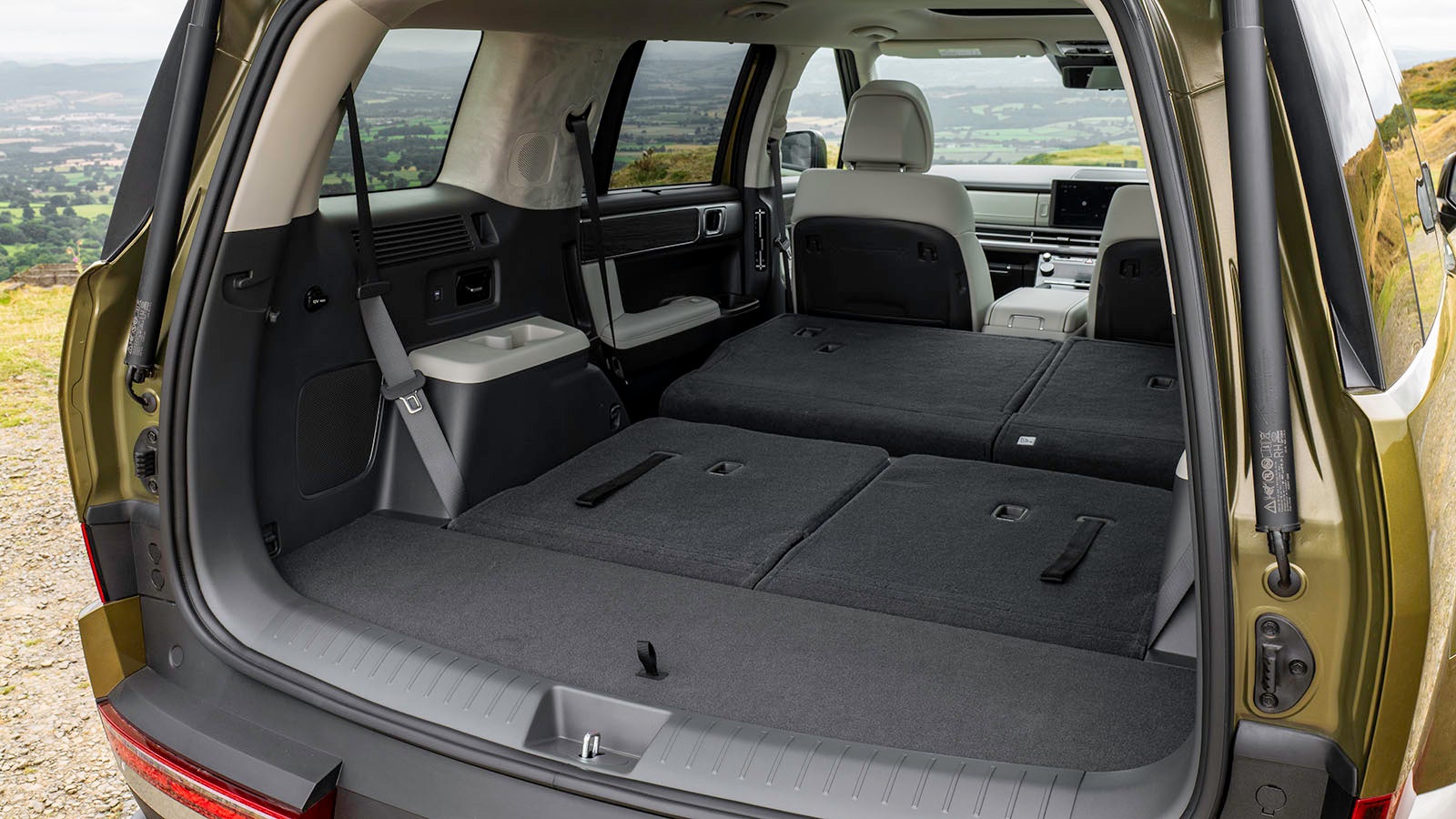
Hyundai Santa Fe Review

When creating the latest Hyundai Santa Fe, its designers began with a box – and then clocked off for the rest of the day.
Actually, no. This super-sized SUV might resemble a brick – especially if you pick the optional Terracotta paint colour – but its square shape hides immense practicality and some seriously smart tech. We took the Santa Fe camping with Hyundai in Wales, and even slept in it to learn what it's like to live with. Keep reading to find out…
- Absolutely massive cabin
- Impressive ride and handling for its size
- Fair pricing compared to premium rivals
- No diesel engine options
- Touch-sensitive controls are a little fiddly
- Like rivals, safety systems are intrusive
Should I buy a Hyundai Santa Fe?
Older Santa Fe models earned a quiet reputation among family buyers for their spacious cabins, robust build quality and competitive pricing. They just weren't very memorable – with conservative styling and no real stand-out feature to lift them above rivals.
Hyundai has definitively put that criticism to bed with this fifth-generation Santa Fe, however, thanks to a bold and blocky new look. The car's monolithic shape is the first thing that strikes you, but you'll also notice the butch horizontal front grille and distinctive 'H' pattern headlight signatures showing off the same retro-futuristic styling seen on recent Hyundais like the Ioniq 5.
Joining the visual glow-up is a substantial lift in interior design, with tough-looking upright dashboard styling and plush materials widely featured. Standard equipment is impressive, with a full suite of advanced driver assist systems like automatic emergency braking and lane-keep assist, plus adaptive cruise control and optional semi-autonomous driving.
For the first time in a Santa Fe, there are no diesel options to be found. There's a choice of hybrid-only engines under the bonnet, all paired exclusively with automatic gearboxes. These engines are smooth and powerful in isolation but we reckon this is a bit of a missed opportunity – not least due to the noticeable drop in towing capacity compared with its predecessor's 2.2-litre diesel option.

What matters more to buyers in this class, however, is interior space and the Santa Fe scores top marks in this area. There are quite a few seven-seat SUVs on the market but too many of them treat the third row as an afterthought, with barely enough space for small children, let alone full-size adults. As we'll discover, the Santa Fe isn't like that, with proper space in all three rows and lots of convenience features so all seven occupants can travel comfortably.
Entry-level Premium models dip slightly below £50,000, mid-range Ultimate models sit on that boundary, and range-topping Calligraphy versions are nearly £53,000. Add another £5,000 if you want to step up from the full-hybrid to the plug-in-hybrid model, and a further £1,000 to add the six-seater layout with middle-row 'captain's chairs' to the range-topping trim.
These figures seem fairly substantial until you compare the Santa Fe to the rest of the market. Almost no seven-seater SUVs with actually useful third rows are available for less money – only the older Kia Sorento or certain people carrier models get close and neither option has the Santa Fe's charming Tonka-toy styling.
Interior and technology

Settle in behind the Santa Fe's wheel and you'll feel like you're heading up a command centre. There's a wide panel of infotainment screens on top, with a selection of dedicated controls beneath them – some physical, some touch-sensitive. These controls flow into the centre console, which contains the wireless charging pad for your phone, a set of big cupholders, and a massive lower storage area.
Your eyes fall first on the cinematic infotainment system that seamlessly incorporates a pair of 12.3-inch screens – one for central infotainment functions and one behind the steering wheel for the driver. A neat feature here is a small textured pad to the right of the driver's screen, which can accept magnetic accessories so you can personalise your cockpit area.
Beneath the screens are two knobs for stereo volume and other functions like map zoom, plus shortcut buttons for the infotainment system. A very slight annoyance is that Hyundai hasn't swapped the position of the two knobs for right-hand-drive models, so the volume is further away than the lesser-used secondary knob. One level down, you'll find the climate controls – points are earned for having dedicated controls here rather than squirrelling them away in the infotainment screen, but lost because they're touch-sensitive, which makes them a little tricky to hit while you're driving.

Hyundai's infotainment systems have sometimes looked quite busy in the past, which makes it hard to pick out the information you're actually looking for. The setup in the Santa Fe has been visually simplified and it's all the better for it. Menu navigation is generally intuitive and the shortcut buttons help make it easy to swap between functions on the fly.
Another slight annoyance is the fact that, if you're using either the built-in wireless Apple CarPlay or Android Auto, pressing the voice command button on the steering wheel summons the car's native voice assistant, rather than Siri from your iPhone, for example. Unlike Siri, the native assistant can't change songs on Spotify, so you have to summon Siri using the touchscreen instead.
We've nothing bad to say about the digital driver's dials, however, which have simple, sharp graphics and a minimum of visual fuss. As a result, it's really easy to just glance at them and pull out the relevant information without feeling like you're doing a word search.
Practicality

Buyers in this class need lots of space and the Santa Fe scores a perfect 10 here. You get seven seats as standard, with the ability to slide and recline the second row, allowing you to evenly split the space between your rear passengers. There's also an optional six-seat layout on range-topping Calligraphy models, with a pair of middle-row 'captain's chairs' that have even more reclining options.
It's the third row that really stands out in the Santa Fe. Many seven-seat SUVs struggle when every seat is filled, with next-to-no legroom for those in the third row. Not so in the Santa Fe – if you slide the second row a little forward, there's enough space in the third for even relatively tall adults. In practice, the only way you're going to get more space is by choosing a more serious people carrier like the Volkswagen ID. Buzz.
Even if you're just using the Santa Fe as a five-seater, it still impresses. In this mode, you can slide the second row all the way back and have more legroom than most limousines can muster. And, while the middle-seat passenger won't have lots of elbow room to speak of, there's no transmission tunnel to rob them of foot room.

As you'd expect based on the rest of the car, the boot is enormous, too. With all seven seats up, space is limited to just a few shopping bags, but fold the third row and you get 628 litres of cargo-carrying space. Fold the second row too and this figure jumps to a van-like 1,949 litres. The plug-in hybrid is a fractional seven litres smaller in both dimensions. With both rows folded, the cabin is long enough to fit a mattress for a tall adult to sleep on – something we actually tried out with the Santa Fe parked halfway up a mountain in Wales.
Complementing the vast boot is a wealth of storage spots dotted about the cabin. Front and second-row passengers have big door bins, plus oversized cupholders that can carry smartphones or small tablets. There's a double glovebox ahead of the front passenger. On top-spec Calligraphy cars, the upper box has a UV light to disinfect small items like your phone at the touch of a button.
In the centre console, you'll find a spacious lower storage shelf that's been sized for a box of disinfectant wipes, and a clever armrest which is hinged at both ends to allow easy access whether you're sat in front or in back. This double-action armrest cover also has a lower storage drawer beneath it for second-row passengers.
Engines and performance

For the UK, Hyundai is only offering hybrid engines. You can choose between a 215hp self-charging full hybrid or a 253hp plug-in hybrid. Both use a 1.6-litre turbo petrol engine paired to a six-speed automatic with a column-mounted gear selector, which frees up space in the centre console for storage and wireless charging for your phone. The full hybrid comes with front-wheel drive as standard, with four-wheel drive available as an option, while the plug-in hybrid is four-wheel drive only.
We didn't tackle any serious off-roading – the Santa Fe's not really built to crawl over rocks – but the traction of our four-wheel-drive full-hybrid model impressed us while following a dirt road up a Welsh mountain, as did the hill-descent mode when coming back down. If you're not planning to drive any further off-road than a grassy car park, however, the two-wheel-drive model should be fine, especially if you have a set of winter tyres handy for colder weather.
At urban speeds, we found the full-hybrid model to be a faithful companion. There's decent low-speed response from the electric motor, so keeping pace with urban traffic is mostly fuss-free. Press the accelerator harder to build up speed and the petrol engine kicks in to add more power. You'll notice its presence as a dull hum in the background but overall refinement remains mostly undisturbed.

If you ask for a burst of speed, the six-speed auto will kick down and send the engine revs high with an accompanying roar in the cabin. Performance certainly isn't blistering but the Santa Fe doesn't feel underpowered so, as long as you're not looking for a car to impress you with a muscular engine, you'll find it more than sufficient.
We only have two real complaints to throw at this setup. One is that you can occasionally catch the auto gearbox out if you're going up or down steep gradients on part-throttle – the car either feeling sluggish as you wait for it to kick down, or sat with oddly high revs as you wait for it to shift up. Our other complaint is the lack of diesel engine. UK buyers love diesel SUVs for long-range driving, and the old diesel-powered Santa Fe could tow up to 2,500kg – far more than the hybrid's 1,100kg figure.
We'll update this review once we've tried the plug-in hybrid. Based on its on-paper figures, we reckon it's only worth spending the extra £5,000 if you already have easy access to EV charging, or if you're buying the Santa Fe as a company car. The plug-in's electric-only range of 34 miles is about average for the class and lags behind the slightly smaller Skoda Kodiaq plug-in hybrid. And, while its 253hp trumps the full-hybrid's 215hp output, the extra weight of the larger plug-in battery pack means performance is essentially the same.
Driving and comfort

No one buys a big SUV like the Santa Fe for its driving experience but we were deeply impressed during our time behind the wheel. The handling is grippy and predictable, and even viciously waggling the steering doesn't cause the car to feel tippy – something many other high-riding SUVs suffer from. There's a bit of body roll – this isn't a racey SUV like those from Porsche or BMW – but it's well controlled and never escalates into a sense of wobbliness.
What's also impressive is, despite the Santa Fe's obvious size, it doesn't actually feel that large on the road. A key reason for this is that most of the car's bulk is tied up in length and height. Its width – the dimension that usually makes big cars harder to drive – is fairly restrained, with the Santa Fe ending up narrower than all its premium German rivals. Combine this with great all-round visibility and the big Hyundai is easy to thread down tight city streets.
Settle down for a longer journey and the Santa Fe continues its high-scoring streak. The excellent body control mentioned earlier doesn't come at the expense of ride quality, with the car gracefully flowing over big bumps and potholes to the extent that you usually hear them more than you feel them. Like other heavy SUVs with large alloy wheels, rougher road surfaces can send small amounts of higher-frequency vibrations into the cabin, but you'd have to be looking for things to complain about to let this spoil the otherwise very comfortable ride.
Our biggest complaint about the Santa Fe's driving experience concerns its driver-assistance features, but this comes with the caveat that all its rivals suffer the same issues as these systems are now legally mandated across the industry. Nevertheless, they're no less annoying in the Hyundai with near-constant interference from the speed-limit warning, lane-keep assist or driver-attention monitor. They can all be deactivated but, by law, these functions have to turn on each time you start the car, which does slightly tarnish the Santa Fe's generally excellent driving experience.



















































